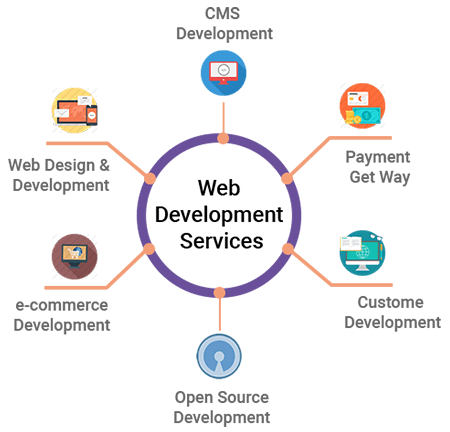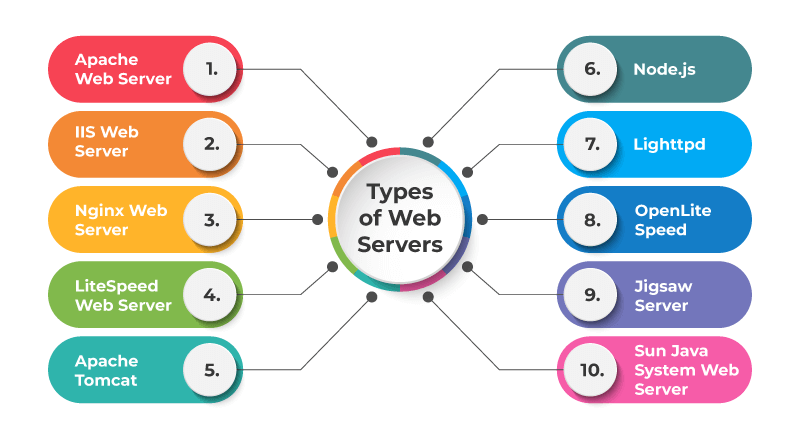
- Introduction to Web Development
- Types: Frontend, Backend, Full Stack
- Core Technologies (HTML, CSS, JavaScript)
- Web Development Frameworks
- Databases and Data Handling
- Server and Hosting Concepts
- Static vs Dynamic Websites
- APIs and Web Services
- Web Security Basics
- Modern Web Dev Tools
- Career Opportunities in Web Development
- Conclusion
Introduction to Web Development
Web development is the process of building and maintaining websites and web applications that operate online through a browser, encompassing tasks such as coding, markup, scripting, user interface creation, backend services, network security, and performance optimization. In today’s digital landscape, where a strong online presence is essential for individuals and businesses alike, web development has become a vital and in-demand career path. This guide introduces the foundational concepts of web development, covering core technologies like HTML, CSS, and JavaScript, along with frontend and backend frameworks such as React, Angular, Vue, Node.js, Django, and Laravel. It also explores database management using systems like MySQL, MongoDB, and PostgreSQL, and delves into hosting solutions, deployment strategies, and cloud platforms. Key architectural concepts, including client-server communication via HTTP/HTTPS and the difference between static and dynamic websites, are explained to provide a clearer understanding of how modern web applications function. The role of APIs in enabling communication between software systems is highlighted, as are essential security practices that protect web applications from threats. The guide also covers development tools such as code editors, version control systems, testing frameworks, and CI/CD pipelines, all of which enhance productivity and code quality. For those looking to gain practical skills and structured learning, exploring Web Designing & Development Courses can be an excellent way to strengthen your foundation and advance in the field. Finally, it outlines career opportunities in web development, detailing various roles, skill requirements, and the growing industry demand, making it a valuable resource for both beginners and aspiring professionals.
Types of Web Development: Frontend, Backend, and Full Stack
Web development is broadly classified into frontend, backend, and full-stack development.
- Frontend development focuses on a website’s visual and interactive parts everything users see and interact with directly. It involves creating layouts, buttons, navigation menus, images, and more. Core technologies for frontend development include HTML, CSS, and JavaScript.
- Backend Development: This handles the server-side logic, database interactions, authentication, and more. It ensures the front end receives the data it needs and that business logic is implemented correctly. Backend developers often use languages like Python, PHP, Ruby, Java and frameworks like Node.js or Django.
- Full-Stack Development: Full-stack developers are proficient in front and backend development. They understand how the web works at all levels and can build complete web applications from scratch.

Core Technologies: HTML, CSS, and JavaScript
Every web page relies on three core technologies: HTML, CSS, and JavaScript. HTML (Hypertext Markup Language) provides the structure and content of a web page by defining elements such as headings, paragraphs, images, links, and tables. CSS (Cascading Style Sheets) is responsible for styling the HTML content. It controls the layout, colors, fonts, spacing, and overall visual appearance of a page. Modern CSS tools like Flexbox and Grid offer powerful options for creating responsive and flexible layouts. How to Become a Web Developer is an essential question for anyone new to this field, providing insights into the skills and tools required to succeed. JavaScript brings interactivity and dynamic functionality to web pages. It allows developers to implement features such as animations, form validations, and real-time responses to user inputs, enabling the creation of rich, engaging web applications. Together, these technologies form the foundation of modern web development.
Web Development Frameworks
Frameworks streamline web development by providing pre-written code, components, and best practices.
- Frontend Frameworks: React, Angular, and Vue.js are popular JavaScript frameworks for efficiently building complex user interfaces. They support component-based architecture and virtual DOM for fast rendering.
- Backend Frameworks: Common backend frameworks include Express (Node.js), Django (Python), Laravel (PHP), and Ruby on Rails (Ruby). These frameworks simplify tasks like routing, database access, and authentication. Understanding the Role of a Full Stack Developer can help clarify how these backend tools integrate with frontend technologies to build complete web applications.
- Relational Databases: These include MySQL, PostgreSQL, and SQLite. They use structured schemas and SQL (Structured Query Language) to manage data.
- NoSQL Databases: MongoDB, Firebase, and CouchDB are popular NoSQL databases. They are suitable for unstructured or semi-structured data and offer flexibility in handling large volumes of diverse data.
- Static Websites: These are made up of fixed HTML files. Content does not change unless a developer manually updates the files. They are simple, fast, and secure, ideal for small projects.
- Dynamic Websites generate content on the fly based on user input, database content, or other factors. They use backend logic and are common in e-commerce, blogs, and social media platforms. Understanding components like What is an HTML Iframe can also be useful, as iframes allow embedding external content such as videos, maps, or documents within a web page.
- REST APIs: These use standard HTTP methods (GET, POST, PUT, DELETE) and are widely used for their simplicity and scalability.
- GraphQL: A modern alternative to REST, GraphQL allows clients to request only the needed data, improving efficiency.
- SOAP: An older protocol still used in some enterprise systems for secure and structured communication.
- HTTPS: Secure communication protocol that encrypts data in transit.
- Authentication and Authorization ensure that users are who they claim to be and control access to resources. OAuth, JWT, and session-based logins are standard methods.
- Cross-Site Scripting (XSS): A vulnerability where attackers inject malicious scripts into web pages. Understanding stack choices like MEAN vs MERN Stack Development can also inform how you structure and secure your applications, as each stack comes with its own set of tools and best practices. Input sanitization and content security policies help prevent this.
- SQL Injection: An attack that manipulates SQL queries via input fields. Use parameterized queries or ORM frameworks to prevent it.
- CORS: Cross-Origin Resource Sharing rules define which domains can access your APIs. Properly configuring CORS avoids security issues.
- Frontend Developer: Specializes in user interface design and interactivity.
- Backend Developer: Focuses on server-side logic, APIs, and databases.
- Full Stack Developer: Works across the stack, from designing interfaces to handling backend logic.
- Web Designer: Designs the visual layout and user experience of websites.
- Devops Engineer: Manages deployment, scaling, and infrastructure.
- UI/UX Designer: Enhances usability and visual appeal based on user behavior and feedback.
Using frameworks accelerates development and reduces the need to write boilerplate code while encouraging modular, maintainable applications.
Excited to Obtaining Your web developer Certificate? View The web developer course Offered By ACTE Right Now!
Databases and Data Handling
Web applications often need to store, retrieve, and manipulate data. This is where databases come into play.
Data handling involves querying, inserting, updating, and deleting records. It also involves data validation, data modeling, and managing relationships between entities.
Interested in Pursuing Web Developer Master’s Program? Enroll For Web developer course Today!
Server and Hosting Concepts
Every website requires a server to host and deliver its files to users’ browsers. Web servers store and process website files, making them accessible online. Common web servers include Apache, Nginx, and Microsoft IIS, which help facilitate this function. Hosting services such as Bluehost, HostGator, and GoDaddy offer various hosting options, including shared, VPS, dedicated, and cloud hosting. For scalable hosting, cloud providers like AWS, Google Cloud, and Azure are popular choices, especially for modern applications. Web Developer Certification can be a great way to demonstrate your proficiency in these areas, providing you with the skills necessary to work with these technologies. Deployment is the process of moving a web application from local development to a live server, with tools like FTP, Git, and CI/CD pipelines helping to automate the deployment and version control processes. Web development follows a client-server architecture, where the client (browser or mobile app) sends requests and displays content, running frontend code and interacting with the server. The server processes requests, interacts with databases, and returns responses, typically in HTML, JSON, or XML format. Communication between the client and server usually occurs via HTTP or HTTPS protocols, with RESTful APIs and GraphQL commonly used to structure this interaction.

Static vs Dynamic Websites
Websites can be classified based on their content generation:
Static site generators like Jekyll and Hugo can combine the best of both worlds by allowing content to be generated at build time rather than on each request.
APIs and Web Services
APIs (Application Programming Interfaces) allow different software systems to communicate. They are essential for building scalable and integrated web applications.
Web services are collections of APIs that enable applications to interact across different platforms and services, such as payment gateways, weather data, and authentication providers.
Web Security Basics
Web security is essential to protect data and ensure safe interactions between clients and servers.
Understanding basic security practices is crucial for developers to safeguard application data and user privacy.
Modern Web Development Tools
The modern web development ecosystem includes a variety of essential tools that significantly boost productivity. Code editors like VS Code, Sublime Text, and Atom offer intelligent editing features, debugging capabilities, and a wide range of extensions. Version control systems such as Git, along with platforms like GitHub and GitLab, allow for efficient management of code changes and seamless team collaboration. Package managers like npm and Yarn simplify the process of managing dependencies and libraries. UI frameworks such as React Bootstrap provide ready-to-use, responsive components that accelerate front-end development and ensure consistency in design. Build tools such as Webpack, Gulp, and Parcel automate tasks like bundling, minification, and other development processes, making workflows more efficient. Testing tools like Jest, Mocha, and Cypress ensure code reliability through unit, integration, and end-to-end tests. CI/CD tools such as Jenkins, Travis CI, and GitHub Actions automate testing and deployment pipelines, streamlining the development process. Together, these tools enhance workflows, maintain high code quality, and effectively manage large-scale projects.
Career Opportunities in Web Development
Web development offers a wide range of career paths with strong demand across industries:
Salaries in web development vary depending on experience, location, and specialization, but the field continues to grow with remote and freelance opportunities.
Conclusion
Web development is a dynamic and ever-evolving field that offers endless opportunities for creativity, problem-solving, and continuous learning. At its core, web development relies on fundamental technologies like HTML, CSS, and JavaScript to structure, style, and add interactivity to web pages. These essential tools serve as the foundation upon which developers can build engaging and functional websites. For those looking to enhance their design skills, Web Designing Training can be an excellent way to bridge the gap between aesthetics and functionality. As developers advance in their careers, they often use frameworks, libraries, and tools like React, Angular, and Node.js to enhance their workflow and streamline development. Security practices also play a critical role, helping to safeguard web applications from vulnerabilities. Whether you’re aiming for a full-stack development role or focusing on frontend or backend development, understanding the complete web development ecosystem is essential. By mastering both basic and advanced techniques, developers can create powerful, responsive web applications and excel in the competitive world of web development.

